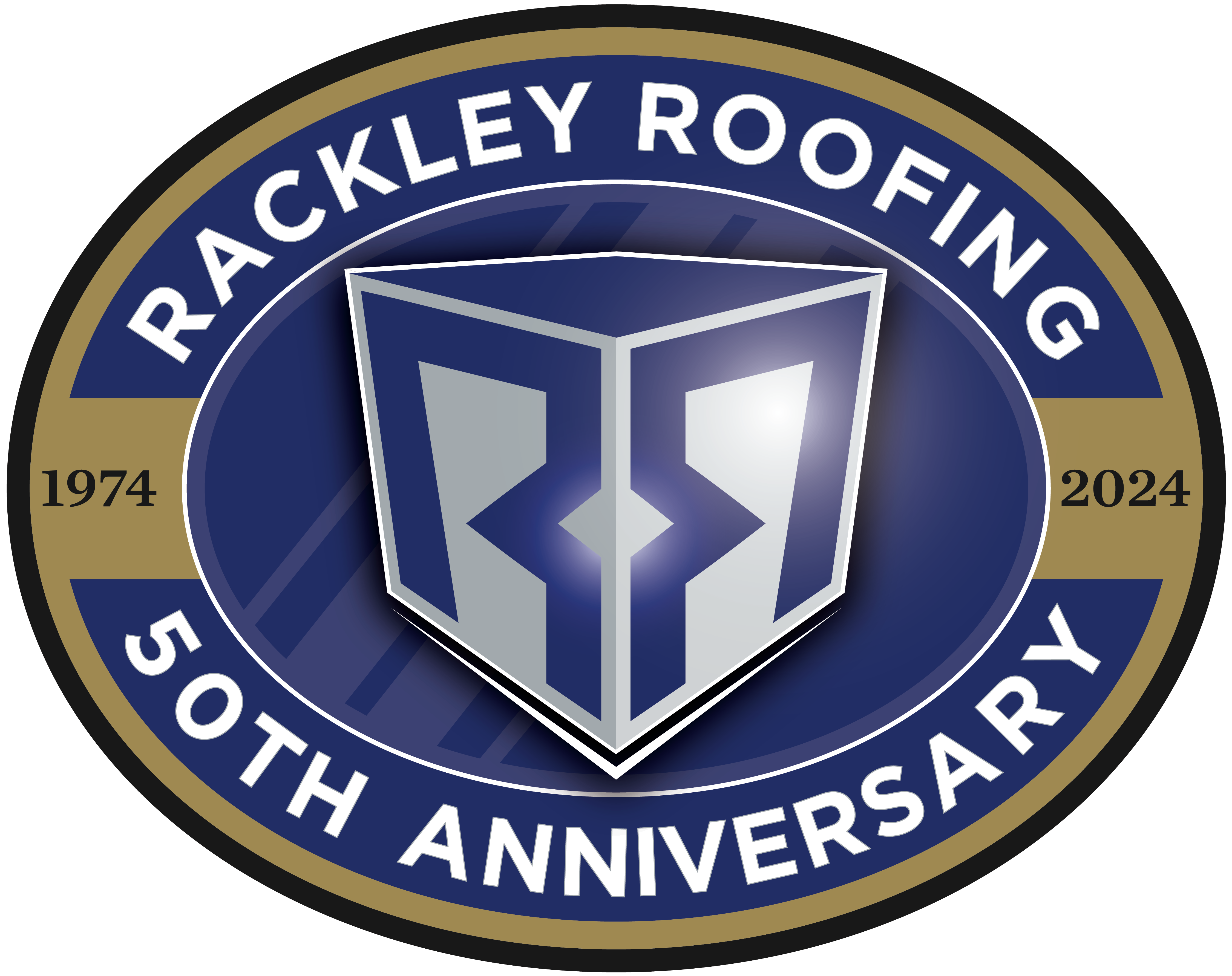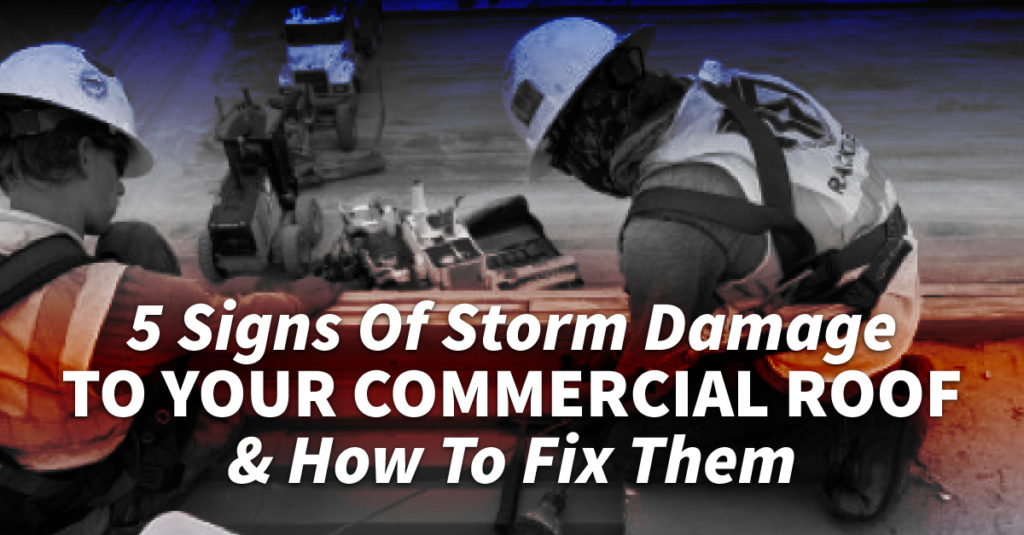At Rackley Roofing, we know that some signs of roof storm damage can be obvious, like water leaks inside your commercial property. Other indicators of a storm’s power may be subtle and leave you at a loss about what to do after storm damage. Begin by checking for these five sometimes-elusive signs of storm damage. Then connect with your local commercial roofer for remedies.
1. Bubbles
If air or moisture becomes trapped within the layers of a multi-layer roof or between the single-ply membrane and the roof insulation, bubbles or blisters may form.
After a storm, contact your local commercial roofer to inspect your roof to identify bubbles or blisters.
Moisture can often travel many feet from its entry point into your roof, with the bubbles giving no indication of where the leak originated. A professional roofer is best equipped to resolve blisters and bubbles.
Usually, this entails opening the bubble to vent the air or remove the water, then resurfacing the roofing material with like material. A common cause of flat roof repair failure is using incompatible materials, so turn this job over to your commercial roofer.
2. Ponding
Ponding is the sustained presence of water on your flat roof more than 48 hours after precipitation. It is caused by depressions in the roof, often due to compacted insulation beneath the top surface.
Ponding worsens with each passing storm as the water weight compresses the insulation and expands the pond. Soon, vegetation can grow from your roof, becoming unsightly, embarrassing, and damaging to your roof’s integrity.
Ponding is remedied by having your commercial roofer diagnose the cause. Your facilities crew can temporarily relieve the problem by removing the standing water, but their actions will not fix the source of the damage. Usually, the roofing material must be peeled back, insulation replaced or re-sloped, and the top layer of roofing material reattached and sealed.
3. Water Leaks
This obvious sign of storm damage may spring up immediately after a storm passes. It may also not appear until many days after, as water slowly makes its way through your roof’s many layers, through the roof deck, and into your interior spaces.
Water leaks on low-slope roofs are notoriously difficult to diagnose. The entry point for the water could be yards away from the interior drip or ceiling stain. Your commercial roofer can track down the leak using specialized equipment. Then the roofing crews can put a stop to water leaks, preserving your building and protecting the health of your customers and employees.
4. HVAC Damage
Storms are not always gentle rain and cool breezes. Hail can drop, often with enough force to dent commercial roofs and damage the HVAC units on the roof. Look for dents on the HVAC exterior units, both on their tops and sides, where hail can ricochet off the roof and strike the metal.
HVAC and other add-on roofing elements call for coordinated remedies. Contact your commercial roofer, but also contact the third-party vendor who installed or maintains those add-ons. An HVAC company can determine if hail damage is serious enough to affect performance. The roofer can ensure the HVAC curb, caulking, flashing, and sealing are all in good shape.
5. Mold Growth
With water leaks come mold and mildew. Mold spores are everywhere in the air around us. They need only calm air and moist surfaces to begin propagating, and they spread very fast. If you see signs of mold growth, the mold began spreading some 18 days earlier and will not stop on its own.
Your facilities crew may be equipped to handle mold, or you may want to contact a mold remediation service. Roofers generally do not remove mold, but they often can put you in touch with the right contractor.
Most mold is unsightly, not particularly harmful; however, black and green molds can cause respiratory distress in your employees and customers, so never ignore a mold problem after a storm.
Overlooked
Unfortunately, while water leaks and mold may be easily spotted, many signs of storm damage are not easy for the untrained eye to see. Your facilities crew may overlook something your professional roofer would spot quickly.
A post-storm roof inspection should be done in two phases:
- Your facilities crew safely performs a ground inspection, walking the building perimeter to check for clogged downspouts and to look for obvious signs of roof damage
- Your professional roofer safely inspects the roof, checking seams, testing flashing, and looking for small signs which could mean big problems
If you have a commercial roof in the southeastern United States, we invite you to contact us today to learn more about the risks storms bring to your property and Rackley Roofing’s superior solutions.



